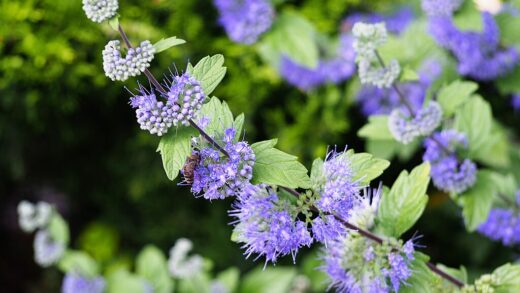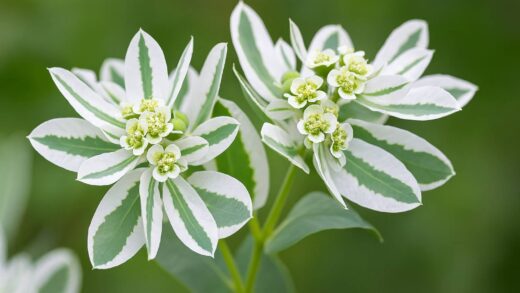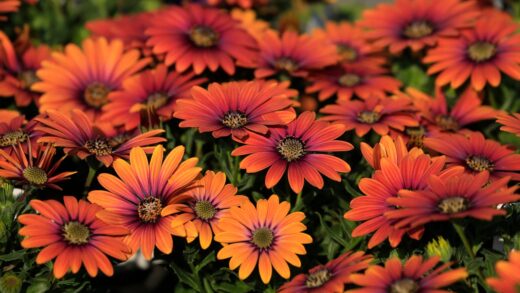The vibrant and prolific blooming for which marigolds are so beloved is directly fueled by one critical environmental factor: sunlight. These plants are quintessential sun-worshippers, and providing them with an abundance of direct light is the single most important aspect of their care. Understanding the specific light requirements of marigolds is essential for any gardener wishing to cultivate strong, healthy plants that produce a spectacular and continuous display of colour. The amount of sunlight a marigold receives daily will profoundly influence its growth habit, the quantity and quality of its flowers, and its overall health and resilience.
Marigolds originate from the sunny, open regions of the Americas, and this genetic heritage dictates their need for bright, direct light. In botanical terms, they are classified as full-sun plants. This means that for optimal performance, they should receive at least six to eight hours of unfiltered, direct sunlight every day. When these conditions are met, marigolds are able to photosynthesize efficiently, creating the energy needed to support robust foliage, sturdy stems, and, most importantly, a profusion of flowers. A location in the garden that is exposed to the sun for the majority of the day is the ideal spot for these cheerful annuals.
While marigolds have a strong preference for full sun, they can demonstrate a degree of tolerance for slightly less light. In regions with exceptionally hot and intense afternoon sun, a location that offers some light shade during the hottest part of the day can actually be beneficial, preventing the plants from becoming stressed. However, there is a clear trade-off. As the amount of daily sunlight decreases, the performance of the plant will also decline. Plants grown in shadier conditions will tend to be taller and more spindly, with fewer flowers and less vibrant colours.
The effects of inadequate light are often quite noticeable. Gardeners who plant marigolds in a location that is too shady will often be disappointed with the results. The plants may appear healthy in terms of foliage, but they will produce very few buds, and the flowers that do develop may be smaller and less impressive. Therefore, when planning your garden layout, it is crucial to reserve your sunniest spots for plants like marigolds that truly need it to put on their best show.
The importance of full sun
Full sun is defined as a location that receives a minimum of six hours of direct, unobstructed sunlight per day. For marigolds, meeting this requirement is the cornerstone of successful cultivation. Sunlight is the energy source that powers photosynthesis, the process by which plants convert light, water, and carbon dioxide into the sugars that fuel their growth. When a marigold is bathed in sunlight for most of the day, it is able to produce a surplus of energy. This excess energy is then channelled into the production of flowers, resulting in the dense, colourful display that gardeners desire.
More articles on this topic
In a full-sun location, you will notice that marigolds develop a compact, bushy, and sturdy growth habit. The stems are strong, the foliage is a healthy deep green, and the plant is well-proportioned. This robust structure allows the plant to support a large number of heavy blooms without bending or breaking. Furthermore, ample sunlight plays a crucial role in the intensity of the flower colour. The pigments that create the brilliant yellows, oranges, and reds in marigold petals are produced more abundantly when the plant is exposed to high levels of light, making the blooms more vibrant and eye-catching.
Beyond aesthetics and flower production, full sun also contributes significantly to the overall health of the plant. A sunny environment allows the foliage to dry quickly after rain or morning dew, which greatly reduces the risk of fungal diseases like powdery mildew and botrytis blight. These pathogens thrive in damp, shady conditions. By planting in the sun, you are creating an environment that is naturally less hospitable to disease, leading to healthier plants that require less intervention and maintenance.
When selecting a planting site, carefully observe the path of the sun throughout the day. Take note of areas that are shaded by buildings, trees, or other large shrubs. Choose a spot for your marigolds that receives direct light from mid-morning through the afternoon for the best results. This ensures they receive not only the required duration of light but also the high-intensity light of the midday sun, which is most effective for photosynthesis. Prioritizing a full-sun location is the most important decision you can make to guarantee a successful and beautiful marigold display.
Effects of partial shade
While marigolds will always perform best in full sun, they can tolerate conditions of partial shade, especially in hotter climates. Partial shade is typically defined as an area that receives between three and six hours of direct sunlight per day. In very hot southern regions, planting marigolds in a location that gets morning sun and some protection from the intense, scorching heat of the late afternoon can actually prevent the plants from wilting and becoming stressed. This can help to preserve the quality of the flowers and foliage during the peak of summer.
More articles on this topic
However, in more temperate or cooler climates, planting marigolds in partial shade will result in a noticeable decline in performance. The most significant effect of reduced light is a dramatic reduction in the number of flowers. The plant, not receiving enough light to create surplus energy, will prioritize its resources on vegetative growth—producing leaves and stems—in an attempt to reach for more light. This results in a plant that may look green and leafy but produces very few, if any, blooms.
Another common consequence of growing marigolds in insufficient light is a change in their growth habit. Instead of being compact and bushy, the plants will become “leggy.” This means their stems will be unusually long, thin, and spindly as they stretch towards the available light source. This leggy growth is structurally weak, making the plants more prone to flopping over or being damaged by wind and rain. The foliage on a shade-grown marigold may also be a lighter shade of green compared to its sun-grown counterparts.
Ultimately, while a marigold may survive in a partially shaded location, it will not thrive. It will be a shadow of its potential self, lacking the vibrant colour and prolific blooms that make it such a popular garden choice. If you have a shady spot in your garden, it is far better to choose a plant that is naturally adapted to those conditions, such as an impatiens or a begonia, and reserve your precious sunny spots for plants like marigolds that depend on it for their beauty and vigour.
Light requirements for seedlings
Just like mature plants, marigold seedlings have a critical need for light. Once a marigold seed has germinated and the first set of leaves (cotyledons) has emerged, the seedling must be exposed to a strong light source immediately. This is a crucial stage where inadequate light can have long-lasting negative effects on the plant’s development. If seedlings do not receive enough intense light, they will quickly become leggy, developing long, weak, and pale stems as they stretch desperately towards the light.
When starting seeds indoors, a common mistake is to place the seed tray on a windowsill that does not receive enough direct sun. While a south-facing window is the best option, even this may not provide the intensity of light required for sturdy, compact growth, especially during the shorter days of late winter or early spring. The seedlings will often bend dramatically towards the glass and become etiolated, or stretched. These leggy seedlings are fragile and have a much harder time transitioning to the outdoor environment when it is time to transplant them.
To avoid this problem, the ideal solution for starting seeds indoors is to use artificial lighting. A simple fluorescent shop light or a dedicated LED grow light suspended just a few inches above the tops of the seedlings provides a much more direct and intense source of light. The lights should be run for 14 to 16 hours per day to mimic the long days of summer. As the seedlings grow, the height of the light fixture should be adjusted to maintain that close distance. This practice will result in seedlings that are short, stout, and have a deep green colour—all signs of a healthy, vigorous start.
For seeds that are sown directly into the garden, it is important to choose a location that is already in full sun. This ensures that from the moment they emerge from the soil, the seedlings are receiving the high-intensity light they need to develop properly. Thinning the seedlings to the correct spacing is also important, as this prevents the young plants from shading each other and competing for light, allowing each one to develop into a strong and healthy individual plant.
Adapting to different climates and conditions
The ideal amount of sunlight for marigolds can be subtly influenced by the specific climate in which they are grown. In cooler, more northern climates with milder summers, providing the absolute maximum amount of sun possible is always the best strategy. In these regions, the sun’s intensity is lower, and the plants will benefit from every hour of direct light they can get. A spot that is in full sun all day long is perfect and will allow the plants to reach their full flowering potential during the shorter growing season.
Conversely, in very hot, arid, or southern climates, the afternoon sun can be incredibly intense and may cause stress to the plants. In these regions, a location that receives full morning sun but gets some light or dappled shade during the hottest part of the afternoon (from about 2 PM to 5 PM) can be beneficial. This can help prevent the foliage from scorching, reduce wilting, and may even prolong the life of the individual flowers. The plants will still receive more than the minimum six hours of direct light, ensuring excellent flower production while protecting them from extreme heat stress.
The type of marigold can also play a small role. The large-flowered African marigolds (Tagetes erecta) are generally very heat-tolerant and thrive in the sunniest, hottest parts of the garden. The smaller French marigolds (Tagetes patula) are also sun-lovers but may appreciate a little afternoon shade in the hottest climates more than their larger cousins. The Signet marigolds (Tagetes tenuifolia), with their fine, lacy foliage, can also be slightly more sensitive to scorching in extreme heat.
Ultimately, the key is to observe your plants and your specific garden environment. If your marigolds, planted in full sun, seem to be consistently wilting and stressed every afternoon despite being well-watered, it may be a sign that the heat and sun intensity are too much for them. In this case, providing some temporary shade or considering a location with afternoon protection for next year’s planting might be a wise adjustment. However, for the majority of gardeners in most climates, the simple rule holds true: more sun equals more flowers.


















